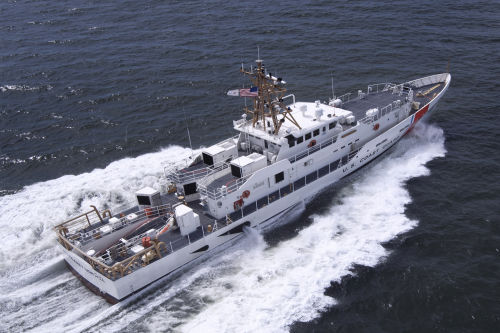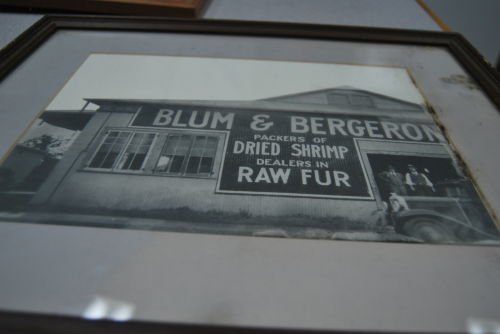
From machining to some really big machines
February 26, 2014
Cut Off general store aims to satisfy customers
February 26, 2014For Blum and Bergeron, a constant in the south Louisiana shrimp industry, China was a launch pad and a life raft, the key to its inception and a failsafe during the Great Depression.
Leopold Blum entered the dried shrimp business because it was his best option. Blum had a route to sell dry goods out of New Orleans in south Louisiana, including Houma. Cash was in the area light, so Blum traded his dry goods for dried shrimp, which he brought back to New Orleans and sold to Chinese consumers.
Soon enough, Leopold decided he could make his own way by trafficking dried shrimp, so he forged a partnership with Shelley Bergeron, owner of a Houma tavern, and launched Blum and Bergeron. They first applied for a business license in 1911; 103 years later, the wholesaler of RedBug Brand Dried Shrimp stands as one of Terrebonne’s oldest enterprises.
Early on, Blum met a broker out of California and sent him a sampling of the product. The broker returned from an exploratory trip to China with the exclusive patent to sell dried shrimp in that country.
Louis Blum Jr., one of Leopold’s three grandsons who run Blum and Bergeron now, said the company became the first to export seafood globally from Louisiana.
“When it got to the Depression, they were selling over 2 million pounds of dried shrimp in China every year,” Louis said.
Dried shrimp trafficking to China was quelled after World War II. Blum and Bergeron still handles international orders, though not on the same scale as before. Now, most international business is shipment of “shrimp dust,” or ground up shells and heads, to Japan, Louis said.
Louis Blum Sr. took over the business in 1968 and ran it until 2005, when he passed away. Louis Sr.’s nephew Tommy Cobb ran the company for three years before his death.
The third generation of Blums and Barry Fanguy, Louis Jr.’s nephew, now manage Blum and Bergeron. They oversee the warehouse on West Main Street – the pink façade recently painted blue – where the dried shrimp is packaged and shipped from.
Inside, the building retains its original structure. Cypress columns stretch from pine tongue and groove pine floors – built to withstand heavy weights – to the high ceiling. Refrigerated rooms and an area to sort the seafood are off to the side.
Dried shrimp are just as they sound. When dehydrated, the meat shrivels to about a fraction of its original size. They are easy to preserve and consume in a number of fashions, known for a salty flare.
South Louisianans are probably aware dried shrimp can be eaten as a snack and thrown in with a gumbo, but its practical uses are much more extensive. A New York Times piece from 2001 proclaimed dried shrimp as a natural flavor enhancer that makes “everything they touch taste better,” on the same scale as bacon, dried mushrooms and anchovies. Asians have long used dried shrimp in a variety of dishes.
If easy to eat, dried shrimp are difficult to produce and package. The painstaking, meticulous process requires several rounds of sorting and removing debris from batches and culminates in a stage that requires workers to handpick trash from mounds of the dehydrated shellfish.
Blum and Bergeron purchases dried shrimp, but they are not separated by size and still include a lot of debris.
“It’s very tedious,” Louis said of the sorting process.
A desire to streamline shrimp dehydration engendered innovation. A shrimp beater, which separates the meat from the shell and heads, was among the dried shrimp industry’s important innovations. Shelley Bergeron and Freddy Chauvin patented the creation, a model of which remains at the company’s Houma facility.
An apparatus used at the warehouse to sort and sift dried shrimp was built with a rolling pin help rotate the conveyor built, the pin held firmly against the belt by the weight of a dangling iron. A second handmade machine is also utilized to blow trash while heavier shrimp falls atop screens with various gratings, to sort by size.
Most of the Red Bug shrimp are sold without heads or shells, but they also package “Wholecooked” dried shrimp, popular among Hispanics, Louis said.
The industry has changed immensely over the past century, but Blum and Bergeron are showing no signs of fading away.
After the hurricanes of the last decade, the number of shrimp purchases who have drying operations has further declined. Many of the remaining shrimpers and driers have ramped up their capabilities, but the overall market has condensed, Louis said. These facilities lay out freshly caught shrimp on a conveyor belt and use heaters to dehydrate the meat.
“It started getting smaller and smaller, and the fishing community got smaller and smaller,” Louis said. “Where I used to go down the bayou and pick up 1,000 pounds of shrimp from each (drier), I go today and pick up 3,00 to 4,000 pounds from each one of them, and then have to leave some down there to do it. … I’m still getting basically what I need.”
Leopold Blum and Shelley Bergeron founded their business to package and ship dried shrimp in 1911, also dealing in raw fur, as this classic photograph attests.












